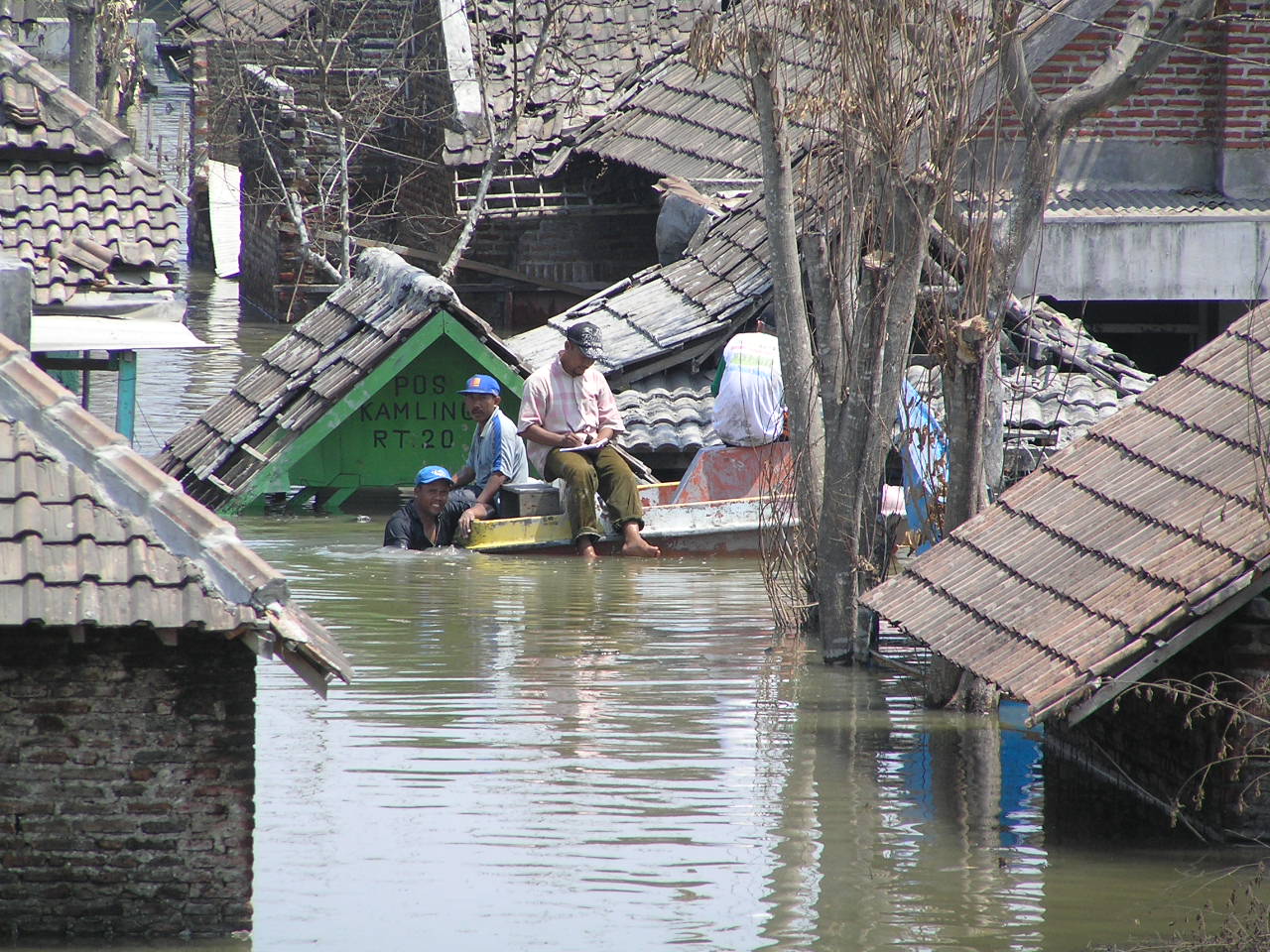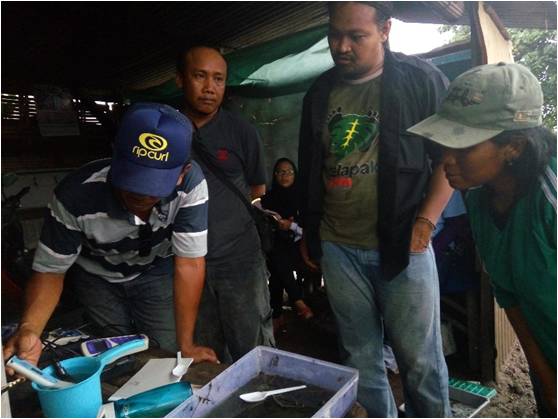Research on Impact of Lapindo Mudflow on Aquatic Ecosystems, Wells, Fish Ponds, and Paddy Fields surrounding Alo river and Porong river, Sidoarjo, Indonesia
 |
Wahana Lingkungan Hidup Indonesia (WALHI) Jawa Timur |
 |
Christanto, Fanny Trijambore |
 |
http://walhijatim.or.id/ |
 |
JPY 500,000 |
Research Background Final Report (abstract) Others

a Lapindo Mudflow

Training, Biomonitoring and Sampling
Research Background
On May 29, 2006, hot hazardous mud and gases, known as “Lapindo Mudflow” began erupting in Porong, Sidoarjo, East Java, Indonesia. This tragedy was man-made or triggered by PT Lapindo Brantas hydrocarbon exploration, located at only 150 meters away from the eruption point. At its peak, Lapindo Mudflow spewed up to 180,000 m? of mud per day. The mudflow already drowned an area of 900 hectares and engulfed dozens of villages, where WALHI Jawa Timur has been supporting for the victims, to get their rights for what they lost after the mudflow erupted, such as property, good environment, health, work, and education.
Not only such eviction of more than 75,000 inhabitants, the mudflow has been also a big threat to health for the wider local populations, as the government allows the mudflow to flow into the two rivers, namely Alo River and Porong River. These rivers are used by farmers as main water source for their paddy field and fish/shrimp pond. In addition, Sidoarjo has long been known as a producer of milkfish and shrimp, both for domestic needs and for export (Japan is also one of the major importers of shrimp), using the water of the said rivers.
Unfortunately, there has been no official information available from the government about the environmental condition surrounding the area affected by the mudflow, including the health status of the two rivers. However, based on a previous research conducted by WALHI Jawa Timur from the end of 2006 to mid-2007 in the surrounding area, at least two types of toxic heavy metals (Cadmium and Lead) were found in mud and mudflow water that exceed the threshold value quality standard of the Indonesian Ministry of Health.
This indicates that the water of two rivers has been already contaminated by the toxic materials due to the mudflow. And the consumers who continuously eat the rice and fish/shrimp produced in this area could be exposed to health impacts in the long term.
Therefore, WALHI Jawa Timur plans to do a research about the impact of the Lapindo mudflow on the two rivers - Porong River and Alo River. In the research, we mainly use two methods, biomonitoring (a method to measure the rivers health status by using macro invertebrates) and laboratory tests, to strengthen the result about the river health status.
This Research will help community know the actual condition of their environment, and will be the basis for community organizing, advocacy and campaign to be held by WALHI Jawa Timur together with the community to urge the government to establish better policies to take mitigation measures against Lapindo Mudflow and prevent the long-term impacts. Also, the result of the research will be provided for the media and the international society to raise wider awareness of this issue, which should lead more pressure on the government.
[Sep. 2015]
Final Report (abstract)
Heavy metals can cause environmental damage and endanger public health if they accumulate in our body tissue for long period. On May 29, 2006, hot hazardous mud and gases, known as "Lapindo Mudflow" began erupting in Porong, Sidoarjo, East Java, Indonesia. Not only such eviction of more than 75,000 inhabitants, the mudflow has been also a big threat to health for the wider local populations, as the government allows the mudflow to flow into the two rivers, namely Aloo River and Porong River.
This research aims to determine levels of Cadmium (Cd) and Lead (Pb) in the water, sediment and biota on the Porong River and Aloo River, also on the fish pond, paddy field and wells around this two river that already contaminated with Lapindo mudflow. Sample were taken from 5 (five) different location on Porong River, Alo River, fish pond wells and paddyfield. Physico-chemical analysis was carried out as per standard methods at Great Hall of Health Laboratorium of Surabaya, Laboratorium of Pharmacology- Brawijaya University and Laboratorium of State Islamic University "Sunan Ampel" Surabaya. Data were analyzed descriptively qualitatively and comparing to the regulation (KepMenKesehatan No. 907/2002, PerMenKes No. 492/2010 and SNI 7387:2009.
The results showed the levels of Cadmium (Cd) and Lead (Pb) both in the water, sediment and biotas at Porong River, water and sediment at Aloo River, and wells water at Gempolsari and Glagaharum has exceeded the permissible threshold alowed by the regulation. The results also showed the levels of Cadmium (Cd) and Lead (Pb) both in the water, sediment and biotas of the fish pond and paddyfield are still below the permissible threshold alowed by the regulation.
[Dec.2016]
Others
